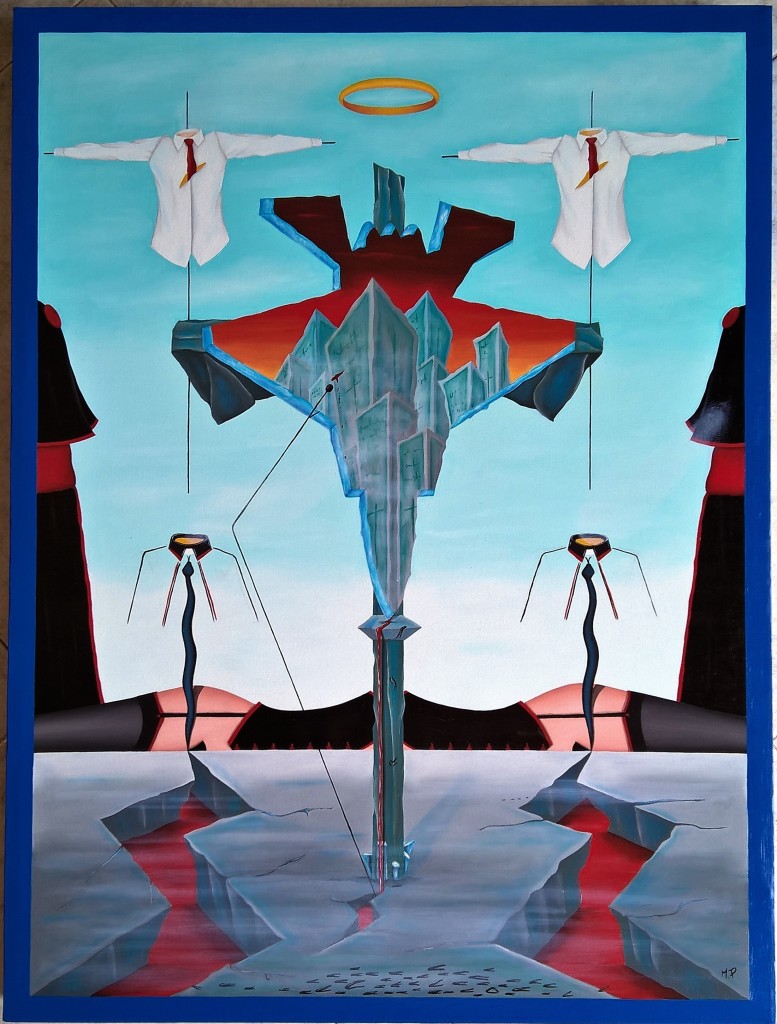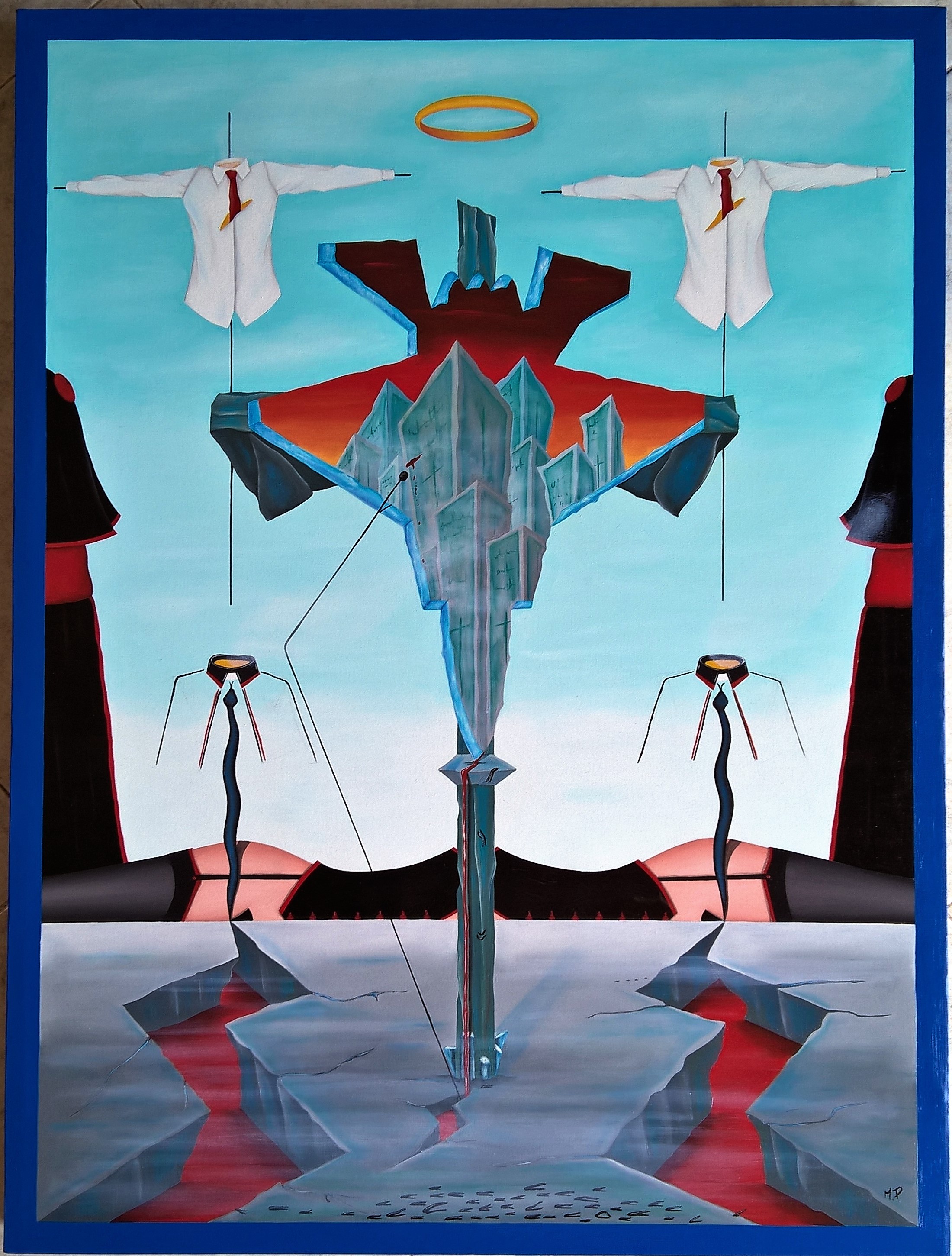
Peccati della Finanza
Il dipinto si presenta come una moderna Crocifissione. Al centro il Nazareno viene surrogato dalla sagoma di un aereo militare che squarcia la tela come una ferita e incornicia un gruppo di grattacieli svettanti. Le tonalità sono cupe e gelide, il suolo spaccato da due crepe sanguinanti, il profilo dell’aereo e la traversa della croce richiamano le pietre tombali, il prospetto dei grattanuvole ricorda il colore dei dollari e con esso la supremazia degli Stati Uniti. Ai lati i due ladroni sono interpretati da due colletti bianchi sacrificati in nome di una nuova Chiesa e con essa celebrati dall’opinione pubblica che viene iniziata ai misteri del nuovo Credo della Finanza. In questi tre simboli si legge una storia fatta di soldi, potere, guerra e controllo delle masse e la storia si complica quando nella narrazione entrano in scena alti prelati, che direttamente o indirettamente assistono alla celebrazione di un martirio contemporaneo, e le donne, simbolo qui di lussuria e corruzione morale ma anche della ciclicità della vita e della fertilità della terra con cui si fondono sull’orizzonte alla sorgente dei fiumi di sangue. La dittatura della Finanza con i suoi templi, i suoi riti, le sue seduzioni, la sua dottrina viene raccontata con disincanto e spirito caustico, non nuovi all’Artista, invitando il lettore ad una riflessione che non si può più rimandare: c’è una possibilità di rinascita o la Chiesa della Finanza attirerà tra le sue fila di sanguisughe brulicanti sempre nuovi adepti attratti dalla sacralità del suo potere?
Sins of Finance
The painting presents itself as a modern Crucifixion. In the center, the Nazarene is replaced by the shape of a military plane crushing the canvas as a wound and framing a group of towering skyscrapers. The shades are dull and frosty, the ground split by two bleeding crevices, the profile of the plane and the cross of the cross recall the tombstones, the scrolls of the wreaths recall the color of dollars and with it the supremacy of the United States. At the sides of the two thieves are interpreted by two white collars sacrificed in the name of a new Church and celebrated by public opinion that is begun to the mysteries of the new Creed of Finance. In these three symbols a story is made of money, power, war and control of the masses and history becomes more complicated when high prelates, who directly or indirectly attend the celebration of contemporary martyrdom, and women, symbolize the story here of lust and moral corruption, but also of the cyclicity of life and the fertility of the earth with which they blend on the horizon at the source of the rivers of blood. The dictatorship of Finance with its temples, its rituals, its seductions, its doctrine is told with disillusionment and caustic spirit, not new to the Artist, inviting the reader to a reflection that can no longer be postponed: there is a possibility of rebirth or the Church of Finance will attract among its ranks of bloody lepers always new enthusiasts attracted by the sacredness of its power?
